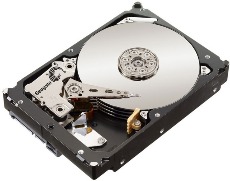
What is the most frightening thing you’ve seen on your monitor/screen? Something that immediately creates a heavy feeling in the pit of your stomach? No, it’s not the most recent election news, though that can be quite upsetting. It’s the Blue Screen of Death (BSoD) with the words “hard drive failure.”
Machines are great, machines are wonderful, machines can and will fail. Often at the worst possible moment. Now, you may think it’s a completely ludicrous idea but I sometimes think that is the machines’ way of letting us know who is really the boss.
Lost Data
The data is gone, now what? Part of that answer lies in what caused the data loss in the first place. We know that mechanical failure is one potential cause, but there are others – natural disasters, for example. We may not consider our weather to play a role in data loss but tornadoes, floods and lightning strikes can all cause damage on a massive scale to physical property. And a computer’s hard drive certainly falls into that category.
Now we must concern ourselves with recovering as much of the lost data as possible. One place to start getting answers to your myriad questions about that is with the professionals who do hard drive recovery for a living.
It’s a complex process to determine how badly damaged the hard disk is, the best means for recovery of the data and then employing the best method to recover the most data possible. Only once we have dealt with the recovery can we think about preventing hard drive failure it in the future.
A very simplistic simile would be going to the local urgent care center with a sore throat. What caused it? A virus, a bacterial infection or something more serious? How do we fix it? Antibiotics, bed rest or is surgery needed? Then get the script filled, get a note for the boss, schedule another appointment. Whatever is needed. Then you can try to figure out how to avoid the illness in the first place. The same is true of your data loss.
Throw It in Reverse a.k.a Backup!
The zeroes and ones that make up the data on your hard drive can be invaluable and hard to replicate. I mean, replicating a string of those digits like 100100110 isn’t all that tough but getting them in the right order and configuration is where the “hard to replicate” idea comes in. Each of those zeroes and ones represents a bit and 8 bits equals one byte. So on a 10G hard drive, one would have 80,000,000,000 characters.
With that 80,000,000,000 number in mind, it seems more than reasonable to get a copy of the hard drive. There are several ways to back up your data whether it’s an ultra-important client presentation or great-grandma’s chocolate chip cookie recipe (possibly even more important). Sending a copy to the company’s server might be an option, as would an external hard drive or there is always the Cloud. You could even buy a gazillion 5-1/4” floppy disks but the time involved and the rent on the vast warehouse space might be a bit off-putting. But by whatever method, it really should be done if there is information on the hard drive you’d rather not lose.
Even if you decide not to back up your hard drive, or your backup plan isn’t foolproof, it is nice to know there is a fall back option. Either way, may the odds be ever in your favor.






